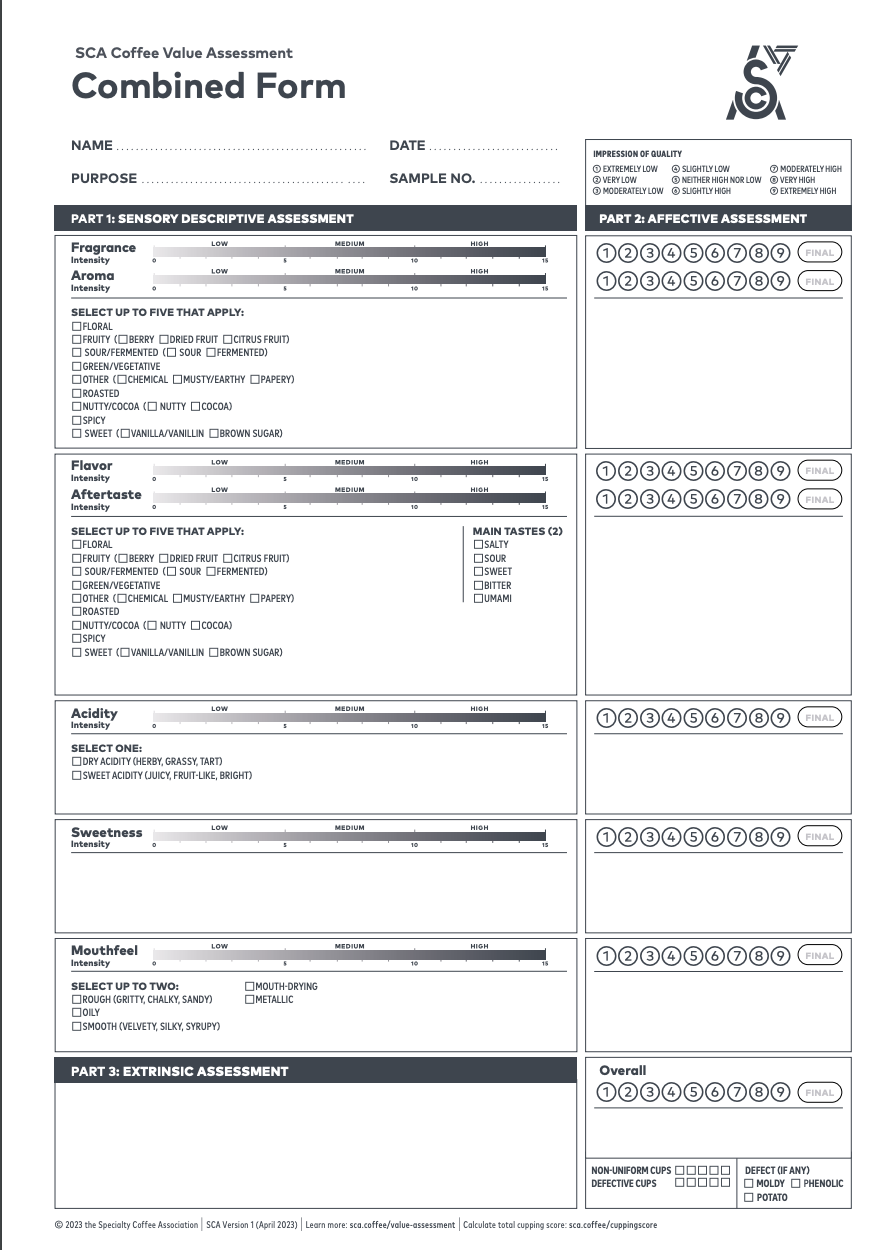how to score coffee
I’m sure you’ve heard people toss around numbers when talking about coffee - you know when you see a coffee that says “86” or “83” or even “90+”? Those are coffee scores! And there’s a few different ways that people get to these numbers.
My favorite scoring system is the SCA cupping form, which you can see here insert image of SCA form]. This is designed specifically for specialty coffee and covers 7 attributes: fragrance/aroma, flavor, aftertaste, acidity, mouthfeel, balance and overall. It also has this section for evaluating cup defects, which are super important to understand and recognize. Like most coffee scoresheets, this is based on a 100-point scale.
SCA Cupping sheet, fully filled out
Another commonly used evaluation is the CoE form, which is standard for all Cup of Excellence events. These are cup quality competitions held in producing countries annually to determine the highest quality coffee lot from that year's harvest. This form covers really similar attributes, but is organized a little differently because it’s used in a different setting.
COE competitions feature extremely delicious and unique coffees offered in very small quantities as auction lots, and the COE form is designed not just to evaluate, but to rank them.
Vintage Cup of Excellence cupping form
If you’ve been paying attention to the specialty coffee industry, you may have heard of the new CVA form, or Coffee Value Assessment form. This was just announced by the Specialty Coffee Association in 2023 and is still in beta. It’s goal is to provide a “high resolution” picture of a coffee across four assessment types: physical, descriptive, affective, and extrinsic. While this system includes objective measures, it also admits that coffee buyers might have different preferences, and that quality may not always be objective.
I’m all about coffee evaluation and sense perception, so stick around and learn more!



